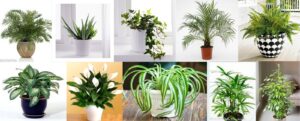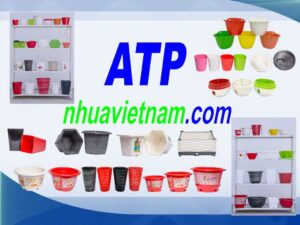In modern life, indoor plants not only serve as decorations but also contribute to a fresh atmosphere, improve mental well-being, and create a living space close to nature. However, many people make mistakes when growing and caring for indoor plants, leading to poor growth or even premature death of the plants. Below are some common mistakes and how to fix them.

- Choosing the Wrong Type of Plant
One of the biggest mistakes is selecting plants that are not suitable for indoor living conditions. Some plants require a lot of sunlight, high humidity, or good air circulation, which not every home can provide. Choosing the wrong type of plant can lead to poor growth or susceptibility to diseases.
Solution: Before buying plants, thoroughly research the living conditions required by each plant. Choose shade-tolerant, low-maintenance plants that are suitable for indoor climates, such as snake plants, ZZ plants, or spider plants.
- Incorrect Watering
Many people believe that watering plants frequently will help them grow faster, but in reality, overwatering can cause root rot and lead to the plant’s death. On the other hand, underwatering can cause the plant to wilt and lose vitality.
Solution: Understand the water needs of each plant and water them according to a suitable schedule. Check the soil moisture before watering by sticking your finger into the soil—if the soil is dry 1-2 cm deep, it’s time to water.
- Insufficient Light
Light is crucial for photosynthesis. Many people place plants in dark corners or areas with insufficient natural light, causing them to grow poorly or die slowly.
Solution: Place plants in areas with natural light, such as near windows or balconies. If your home lacks sufficient light, consider using LED grow lights to supplement the necessary light for the plants.
- Improper Fertilization
Applying the wrong amount or type of fertilizer can burn the plant or cause nutrient deficiencies. Some people neglect fertilization altogether, leading to nutrient-poor plants.
Solution: Use fertilizers appropriate for each type of plant and follow the recommended dosage on the packaging. Regularly fertilize every 1-2 months to ensure the plants receive adequate nutrients.
- Ignoring Humidity Levels
Indoor plants are often affected by dry air conditions, especially in winter when heaters are used. This can cause leaves to dry out and hinder growth.
Solution: Place a water dish or use a humidifier to increase indoor humidity. Additionally, regularly mist the leaves to keep them moist.
- Neglecting to Repot and Refresh Soil Regularly
Some people forget to repot and refresh the soil for their plants after a long time, which can limit root growth or deplete soil nutrients.
Solution: Repot and refresh the soil regularly, typically every 1-2 years. Choose a larger pot to allow the roots to grow comfortably. Also, use new, nutrient-rich soil to provide adequate nourishment for the plants.
- Ignoring Signs of Pests and Diseases
Indoor plants are also susceptible to pests and diseases. If not detected and treated promptly, the plant could be completely damaged.
Solution: Regularly inspect the leaves and stems for early signs of pests or diseases. If detected, use natural remedies or safe chemicals to eliminate them.

Growing indoor plants requires meticulous care and proper knowledge of each plant. Avoiding the mistakes mentioned above will help you maintain a green, vibrant space within your home. Always listen to your plants’ needs and provide them with the best conditions to thrive.
ATP Plastics offers a diverse range of plant pots designed in various sizes, colors, and styles to suit different practical needs. Moreover, the prices are very reasonable, helping customers save on costs when purchasing pots. Besides the ready-made designs, Anh Tu Plastics also accepts custom designs according to customer requirements.

